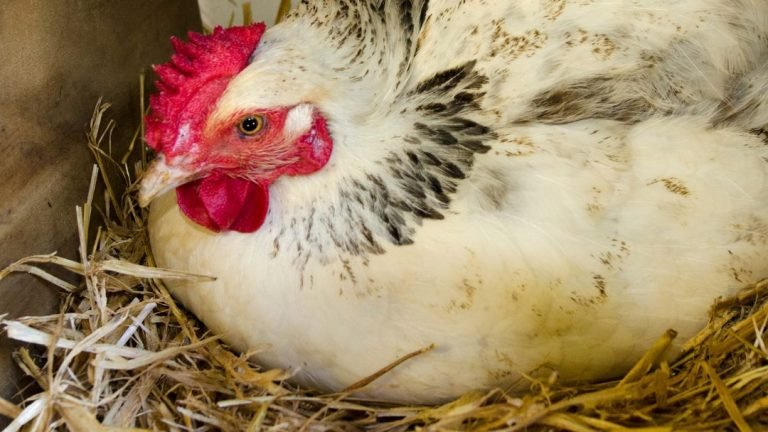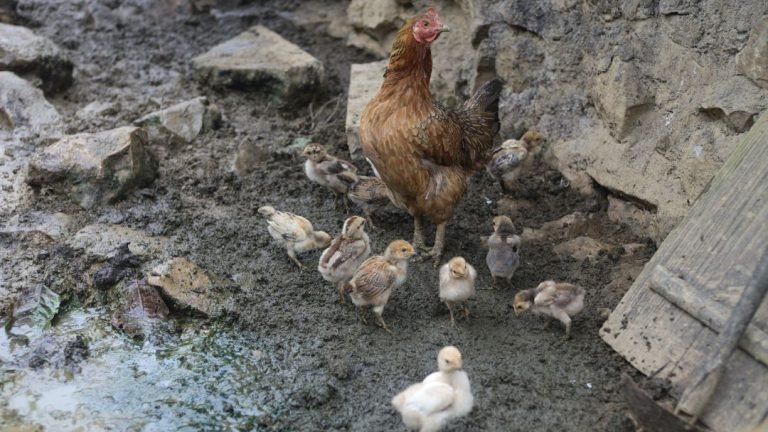A chicken egg colors chart shows the variety of colors eggs can have. In addition to the traditional white and brown eggs, chickens can lay eggs in shades of blue, green, pink, and even speckled or tinted patterns.
Some of the factors that determine egg color include the breed of the chicken, its diet, and genetics. Different breeds lay different colored eggs, and some chickens may even produce eggs with different colors throughout their laying cycle. These various egg colors add visual interest and diversity to the culinary experience, making them a popular choice among consumers.
Understanding The Importance Of Chicken Egg Colors
The Significance Of Egg Colors In The Poultry Industry
In the fascinating world of chicken eggs, the colors they come in hold much more meaning than meets the eye. The diverse hues displayed by chicken eggs, ranging from crisp white to pale blue and even dark brown, may seem arbitrary at first glance. However, these colors play a crucial role in the poultry industry, carrying important genetic and environmental information.
How Egg Colors Are Determined Genetically And Environmentally
The colors of chicken eggs are determined by a combination of genetic and environmental factors. At the genetic level, different breeds of chickens have specific genes that influence the pigment deposition in their eggs. These genes interact with the chicken’s diet, age, and health conditions, giving rise to variations in egg color.
The genetic aspect of egg color mainly revolves around the presence of two pigments: protoporphyrin, which produces brown and speckled eggs, and biliverdin, which contributes to blue and green eggs. Chickens that inherit the genes responsible for higher pigment production will lay eggs with darker, more intense colors.
However, the environment in which a chicken lives also plays a part in determining the egg color. Factors such as diet, exposure to sunlight, and stress levels can influence the deposition of pigments in the eggs. For example, chickens that have access to a diet rich in pigments like marigold petals may lay eggs with deeper orange yolks.
| Egg Color | Significance |
|---|---|
| Brown | – Most common egg color in the market – Indication of certain breed types, such as Red Stars and Rhode Island Reds |
| White | – Preferred choice for baking – Common among commercial egg producers |
| Blue/Green | – Associated with specific breeds, such as Araucanas and Ameraucanas – Unique and eye-catching for consumers |
| Speckled | – Adds aesthetic appeal – Often associated with certain heritage or rare breed chickens |
Understanding the significance of egg colors is vital in the poultry industry. It allows breeders and consumers to make informed choices based on their preferences, nutritional requirements, and even cultural traditions. Additionally, egg colors can be a valuable marketing tool, helping farmers differentiate their products and capture the attention of consumers who are seeking novelty and diversity.
The Natural Spectrum Of Chicken Egg Colors
The Natural Spectrum of Chicken Egg Colors
In the fascinating world of poultry, chickens lay eggs in colors that span a beautiful spectrum. From classic white to various shades of brown, blue, green, and even speckled patterns, the diverse palette of chicken egg colors is a captivating aspect of nature’s design. In this blog post, we will explore the factors that influence these variations, shedding light on why some hens lay eggs of certain colors while others produce eggs of different hues.
Exploring The Diverse Range Of Chicken Egg Colors
If you’ve ever come across an assortment of chicken eggs, you might have noticed the striking array of colors they exhibit. Let’s delve deeper into this captivating spectrum:
Unordered list- White Eggs: Iconic and widely available, white eggs are commonly laid by chickens with white earlobes. They are often associated with breeds such as Leghorns and White Plymouth Rocks.
- Brown Eggs: The most frequently encountered egg color, brown eggs feature hues ranging from light tan to deep chocolate. Breeds such as Rhode Island Reds and Sussex chickens are known for laying these earthy-toned eggs.
- Blue Eggs: Adding a touch of uniqueness to your egg carton, blue eggs come from chickens with a special pigment called oocyanin. Breeds like Ameraucanas and Araucanas lay these blue-tinted eggs.
- Green Eggs: Often mistaken for blue, some chicken breeds, like Easter Eggers and Olive Eggers, produce eggs with a delightful greenish tint. This color arises from a combination of oocyanin and biliverdin, resulting in a range of green shades.
- Speckled Eggs: Offering a delightful speckled appearance, these eggs possess a base color alongside contrasting dots or flecks. Breeds like Marans and Welsummers tend to lay eggs with speckled patterns, adding a beautiful variation to your collection.
Factors That Influence The Variations In Eggshell Colors
Several factors influence why chicken eggs come in such a wide range of colors. Let’s explore these factors to get a better understanding:
Ordered list- Genetics: The primary determinant of eggshell color is the genetic makeup of the chicken. Different breeds carry specific genes that control the pigmentation process, resulting in the production of eggs with distinct colors.
- Diet: A chicken’s diet plays a role in eggshell color. For instance, hens that consume a diet rich in pigments like xanthophylls tend to lay eggs with vibrant yellow-orange yolks and often darker eggshells.
- Age: As chickens age, their eggshell color can naturally change. Young hens might initially lay lighter-colored eggs that darken over time, while older hens may produce lighter eggs with age.
- Breeding and Selection: Through selective breeding, humans have influenced eggshell colors. Breeders have developed specific traits in chickens to produce eggs of desired colors, leading to the diverse breeds we have today.
| Chicken Breed | Egg Color |
|---|---|
| Rhode Island Red | Brown |
| Leghorn | White |
| Ameraucana | Blue |
| Easter Egger | Green/Blue |
| Marans | Dark Brown |
A Closer Look At Different Chicken Egg Colors
When it comes to chicken eggs, most people might think they only come in a standard white color. However, you’ll be pleasantly surprised to find out that there is a wide array of chicken egg colors just waiting to be discovered. In this article, we will take a closer look at the different chicken egg colors and the beautiful shades that they come in.
H3beautiful Shades Of White, Cream, And Pale/h3
Contrary to popular belief, white eggs aren’t the only option when it comes to chicken egg colors. In fact, there are several stunning variations of white, cream, and pale eggs that add an elegant touch to any egg basket. These colors can range from pure white to creamy tones, and even delicate pale shades.
If you prefer a pristine and classic look, then pure white eggs might be your preference. They provide a sleek and timeless appeal, making them a favorite choice for many egg enthusiasts. On the other hand, if you’re drawn to softer hues, cream-colored eggs can add a touch of warmth and sophistication.
The pale shades of chicken eggs are also worth mentioning. Imagine cracking open an eggshell to reveal a subtle hint of color that’s reminiscent of delicate pastels. These pastel-colored eggs can range from light pink and blue to soft green, adding a gentle pop of color to your egg collection.
H3discovering The Vibrant Blues And Greens/h3
If you’re searching for chicken egg colors that are a bit more adventurous and eye-catching, you’ll love the vibrant blues and greens that some breeds lay. These colors are truly a sight to behold and can instantly brighten up any kitchen.
Blue eggs, reminiscent of robin eggs, are both mesmerizing and unique. They are laid by chickens with a pigment called oocyanin, which is deposited on the eggshell during the laying process. The shades of blue can vary, with some eggs exhibiting a light powder blue hue, while others have a deeper and richer shade.
On the other hand, green eggs offer an exotic appeal. These eggs are laid by chickens that produce a pigment called biliverdin, which interacts with the oocyanin in the shell gland. The result is a stunning range of green shades, from mint green to olive green.
H3unveiling The Brown, Pink, And Speckled Eggs/h3
When it comes to chicken egg colors, brown eggs are quite common and widely available in grocery stores. However, that doesn’t make them any less captivating. Brown eggs exude a rustic charm and provide a natural, earthy feel to any egg display.
For those looking for a touch of femininity in their egg assortment, pink eggs are a delightful choice. These eggs may vary in intensity from light blush to richer pink tones, offering a sweet and delicate addition to your collection.
In addition to solid colors, some breeds of chickens lay speckled eggs. These eggs come in a wide range of base colors, such as white or brown, adorned with different-sized spots and specks. The speckles can be various colors, adding an element of surprise and uniqueness.
The Influence Of Chicken Breeds On Egg Colors
When it comes to eggs, we often think of them as being white or brown. However, did you know that chicken breeds play a significant role in determining the colors of their eggs? Different breeds of chickens have different pigment genes that result in a wide array of eggshell colors, ranging from classic white and brown to shades of blue, green, and even pink. Understanding the influence of chicken breeds on egg colors can not only add intrigue to your flock but can also help you identify specific breeds based on their eggshell hues.
Breeds Known For Their Distinct Egg Colors
Some chicken breeds are famous for their remarkable and distinct eggshell colors. These breeds have unique pigment genes that produce eggs with stunning hues. Below, we’ve compiled a list of breeds known for their exceptional egg colors:
| Chicken Breed | Egg Color |
|---|---|
| Araucana | Blue or green |
| Ameraucana | Various shades of blue |
| Marans | Dark brown |
| Olive Egger | Olive or mossy green |
| Easter Egger | Assorted colors including blue, green, pink, and brown |
| Welsummer | Dark brown speckled with dark spots |
How To Identify Chicken Breeds Based On Eggshell Colors
Identifying chicken breeds based on their unique eggshell colors can be a challenging yet rewarding task. By closely examining the color and characteristics of eggs, you can make educated guesses about the breed of your feathered friends. Here are some key tips to help you identify chicken breeds based on eggshell colors:
- Observe the color: Pay close attention to the color of the eggs. Are they white, brown, or something more vibrant?
- Note the size and shape: Different breeds may have variations in egg sizes and shapes. Make a mental note of any distinct characteristics.
- Research breed characteristics: Use online resources or poultry breed guides to compare the color of your eggs with known breeds. Look for specific breeds that are associated with the observed eggshell color.
- Consider other physical traits: In addition to egg colors, take into account other physical features of your chickens, such as feather patterns, comb shape, and leg color. These characteristics can provide valuable clues in identifying breeds.
- Seek expert opinion: If you’re still unsure about the breed of your chickens, consider reaching out to local poultry experts or joining online forums where experienced hobbyists can help you identify your flock.
Remember, identifying chicken breeds based on eggshell colors is not an exact science, as individual variations and crossbreeding can affect egg coloration. However, with these guidelines and your keen observation, you’ll be well on your way to uncovering the mysteries behind the eggshell colors in your coop.
The Fascinating World Of Rare And Unique Chicken Egg Colors
When it comes to chicken eggs, most people picture the traditional white or brown varieties. However, the world of chicken egg colors is far more diverse and captivating than you might think. From shades of blue and green to speckles and even dark chocolate hues, rare and unique egg colors have become a sought-after fascination among poultry enthusiasts and collectors.
Rare Chicken Breeds With Extraordinary Egg Colors
Some chicken breeds boast egg colors that are so extraordinary, they almost seem mythical. These rare breeds are treasured for their one-of-a-kind eggs, which can add a delightful touch of diversity to your breakfast table. Below, we explore some of the fascinating chicken breeds known for their unique egg colors:
| Breed | Egg Color |
|---|---|
| 1. Ameraucana | Varies from shades of blue to green |
| 2. Cream Legbar | Pastel blue or green |
| 3. Olive Egger | Shades of olive, ranging from light to dark |
| 4. Welsummer | Deep, terra-cotta brown with dark speckles |
| 5. Marans | Dark chocolate brown |
These magnificent chicken breeds not only bring joy to farmers and enthusiasts, but also provide a visual feast, with their eggs displaying an astonishing array of colors that are sure to impress.
Collecting And Preserving Rare And Unique Eggs
If you’re fortunate enough to raise rare chicken breeds with extraordinary egg colors, you may want to showcase and protect these precious gems. Preserving the unique characteristics of these eggs can be an exciting endeavor. Here are a few tips to help you collect and preserve rare and unique eggs:
- Handle with care: When collecting rare eggs, it’s crucial to handle them gently and avoid excessive shaking or unnecessary movement. This helps maintain the integrity of the eggshell and prevent any potential damage.
- Store properly: To ensure the longevity of rare and unique eggs, store them in a cool and dry place. Avoid extreme temperatures, as this can affect their quality.
- Document and label: Keep track of the breed, date, and any other relevant information associated with each rare egg. This documentation helps you remember which eggs belong to which breed, ensuring their individual uniqueness is preserved.
- Showcase creatively: Displaying your collection of rare and unique eggs can be a delightful way to share their beauty with others. Consider using glass egg holders or carefully arranging them in a shadow box to create an eye-catching display.
With these tips in mind, you can proudly collect and preserve rare and unique chicken eggs, safeguarding their allure for years to come.
Conclusion
To sum up, understanding the various colors of chicken eggs can be fascinating and informative. Whether you prefer the classic white or are curious about the vibrant blue or speckled brown eggs, each hue carries its own allure. By referring to the chicken egg colors chart, you can confidently identify different breeds and enjoy the diverse range of colors found in nature’s delicious delicacies.
So, explore this colorful world and discover the beauty that lies within each shell.






